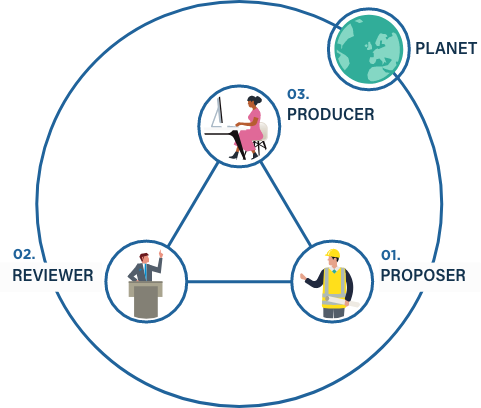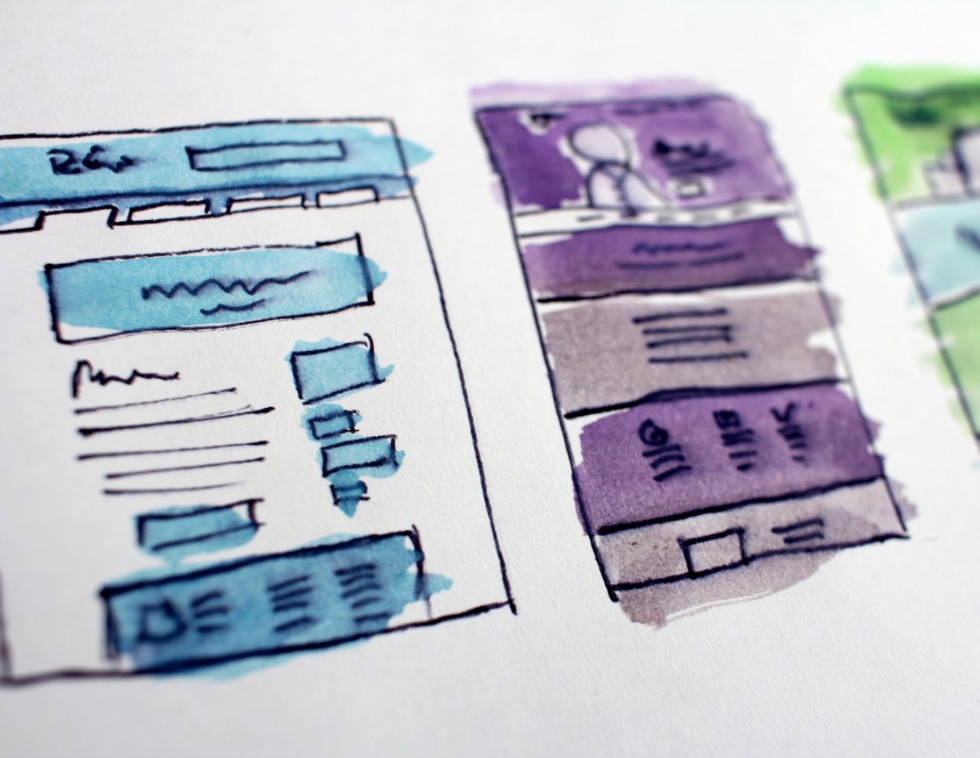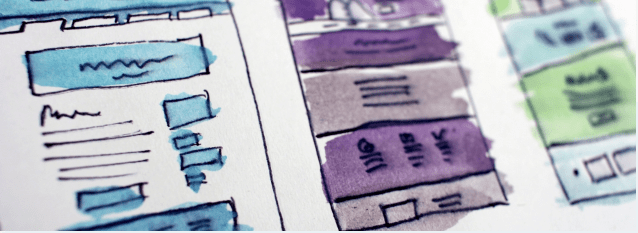We’ve used a Human Centred Design approach
Human Centred Design techniques have been at the heart of the project. By conducting user-research and workshops with relevant stakeholders, an in-depth understanding of existing EIA processes, challenges and pain points has been established.
So, whilst a variety of opportunities to design for have been revealed, the report is just the start – an opening selection of ideas. The hope is that this work will start a conversation and have a catalytic impact by encouraging you, and everyone in the EIA ecosystem, to get involved in making the changes needed.
We have:
- Interviewed 45 people from a variety of relevant organisations
- Held 3 collaborative workshops
- Defined 6 key challenge areas
- Developed seven idea groups
- Taken a closer look at three of them, designing user interface (UI) prototypes and developing roadmaps for each
We identified three key stakeholder groups
The EIA process has three key stakeholder groups
- Proposers – Such as developers and major infrastructure providers
- Reviewers – Such as local authorities, statutory consultees and the general public
- Producers – Such as EIA consultants and their data specialists

The existing journey is complex and chaotic
A typical EIA journey was mapped from the workshops and interview findings. This identified the pain points in the process, which then informed our ideas:

Key challenge areas
Following our identification of pain points on the process map, we were able to cluster these into key challenge areas which we have listed in the report.
Opportunities for improvement and innovation
The identification of key challenge clusters facilitated collaborative development of a number of opportunity areas for transformation:
- Data digitisation – The process needs to systematically collect, feed, store and access data in a standardised machine readable format, to allow recouping and recycling within and across assessments.
- Streamlined processes – The EIA process needs to be streamlined, where previous stages inform and build subsequent ones, e.g. the Scoping process should automatically generate the EIA chapters template.
- Real-time collaboration – A digital EIA should allow multiple stakeholders to write, collate, model, and assess impacts simultaneously, while managing, visualising and tracking overall progression.
- Improved communication – The Environmental Statement needs to explore new technologies and visualisation to communicate the impacts in an accessible, interactive, transparent and personalised way.
- Feedback-based iterative evolution – The whole assessment needs to be reviewed by post-development monitoring to re-configure mitigation, environmental baseline and re-assess methodologies.
We have developed seven high-level ideas
Following our research and a series of idea generation workshops, we were able to cluster our ideas into seven concept areas which aim to solve the challenges identified earlier in our design process.
Read more

